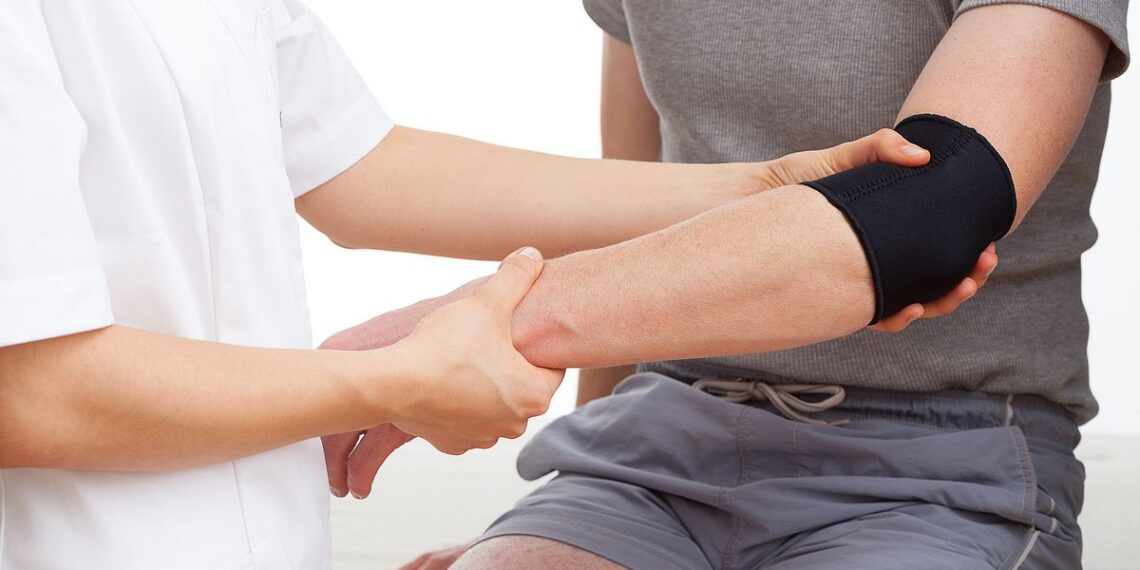There are many different types of elbow joint injuries. The discomfort in your arm and hand might feel like someone has punched you in the funny bone with some. Joint rigidity and a persistent, continuous aching are symptoms of other types of ailments.
If you have an elbow injury, you may not be able to do your job or participate in your beloved pastimes. Injuries in the elbow are common, but most individuals avoid elbow surgery because they are afraid of the agony it might cause.
Here are our best four noninvasive remedies for elbow injury.
Table of Contents
Physical therapy:
When it comes to treating joint pain and injuries, physical therapy is a go-to treatment. Physical therapy consists of a series of exercises and stretches that are designed to strengthen and stretch the portion of the body that has been damaged.
Reducing your risk of future injuries is one of the many benefits of physical therapy, which helps to avoid muscle loss as you heal from an injury. Physical therapy is often recommended in conjunction with other therapies to help patients go back to their normal routines as fast and safely as possible.
Laser therapy:
Our upper extremity specialists may offer noninvasive laser treatment to expedite healing and treat your elbow damage In order to enhance joint function and alleviate pain caused by damage, we turn to multiwave locking system (MLS) lasers.
MLS laser therapy stimulates your body’s inherent healing power by delivering energy in two wavelengths: low-frequency and high-frequency. This therapy improves the flow of oxygen and nutrients to the afflicted region. In order to speed up the healing process after an accident, MLS laser treatment works to enhance soft tissue repair and minimize inflammation.
Regenerative medicine:
Regenerative medicine taps into your own body’s ability to mend itself. For patients seeking regenerative treatment, we provide platelet-rich plasma (PRP) injections and lipoaspirate stem cell therapy.
PRP injections employ a blood-derived solution containing hundreds of growth factors that may drive fast tissue healing. PRP injections. stem cells and growth factors from excess fat are used to regenerate cartilage and bone in the injured region by lipoaspirate stem cell therapy
Medication:
Some elbow injuries may be treated with medicines, while surgery isn’t required for others. Oral or intravenous anti-inflammatory medications are readily accessible, and they may be used in conjunction with other therapies such as physical therapy.
Top Surgical solutions:
Elbow surgery may be a viable option for those who are experiencing extreme discomfort, numbness in the hand or arm, or a reduction in their athletic ability and range of motion. Consultation with an orthopedist is the initial step in learning about your surgery options.
Procedures for the elbow include:
Open elbow surgery
Open elbow surgery, the most frequent kind of tennis elbow surgery, is normally performed on an outpatient basis at a surgical facility. Once the diseased muscle is removed, your surgeon will rejoin the good muscle to the bone by making an incision.
Arthroscopic elbow surgery
Some patients choose this same-day outpatient surgery since it is so little intrusive. Small incisions are made in the elbow and a camera scope and micro tools are inserted by an orthopedist. This procedure removes sick muscle from the bone and reattaches good tissue.
UCL reconstruction
A tissue graft taken from the patient’s own tendons is often used to rebuild an unstable or ruptured UCL rather than just stitching it back together. Athletes in collegiate and professional sports often have this treatment nowadays.
Ulnar nerve anterior transposition
Surgeons may transfer the ulnar nerve to the outside of the elbow to treat ulnar neuritis. Symptoms may be eliminated as a result of this.
Final thoughts
Repetitive strain, whether from an athletic injury or another kind of overuse, is to blame for the majority of people’s elbow ailments. Repetitive strain injuries arise when you do the same thing over and over again without taking any time off to enable your body to recuperate. Overuse may cause inflammation or aggravation of the joints and muscles engaged in the activity over time.
Pain, swelling, stiffness, and weakness are some of the most common symptoms that appear gradually and increase with time. Overhand throwers who use a large amount of power and speed are the most likely to report elbow injuries among sportsmen.

